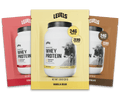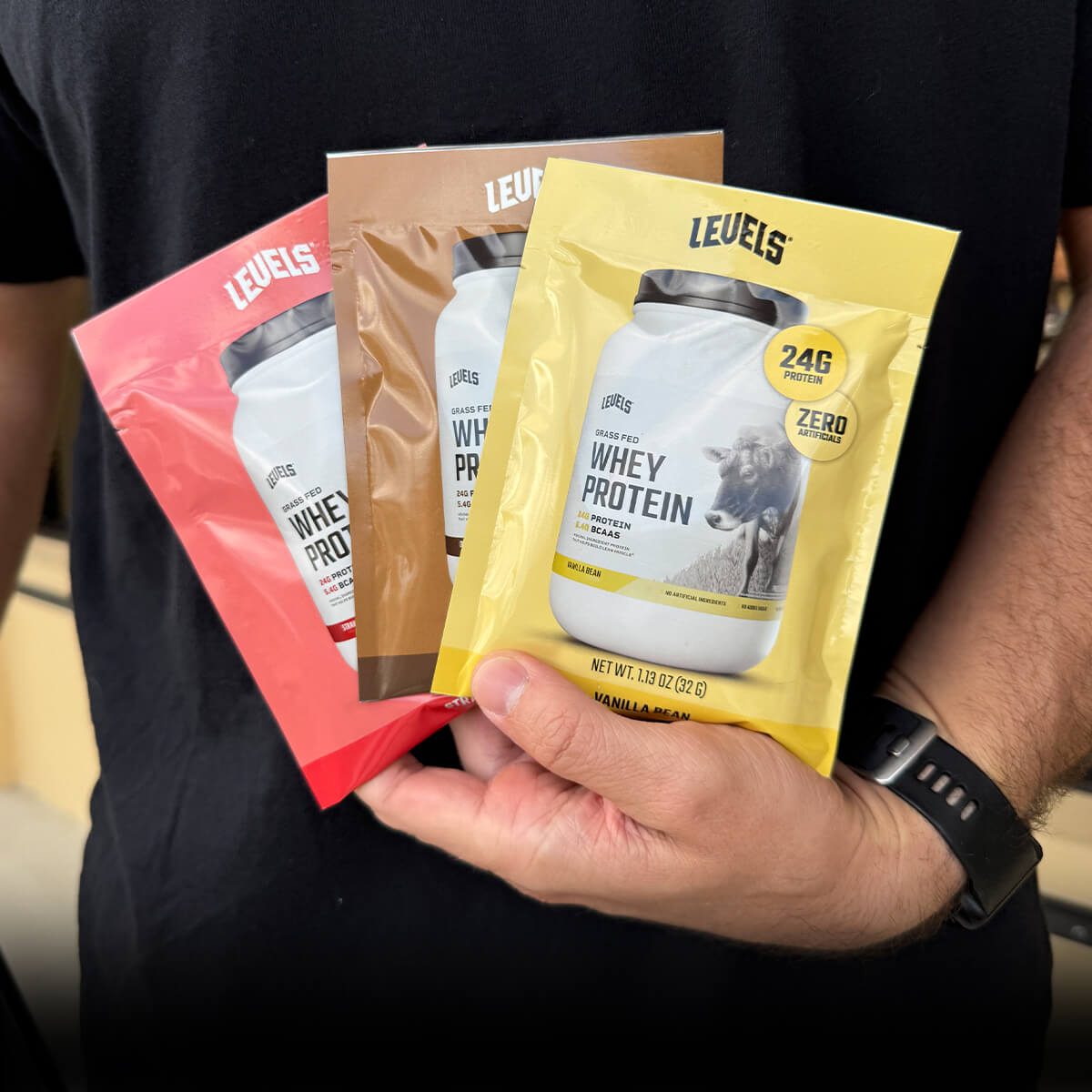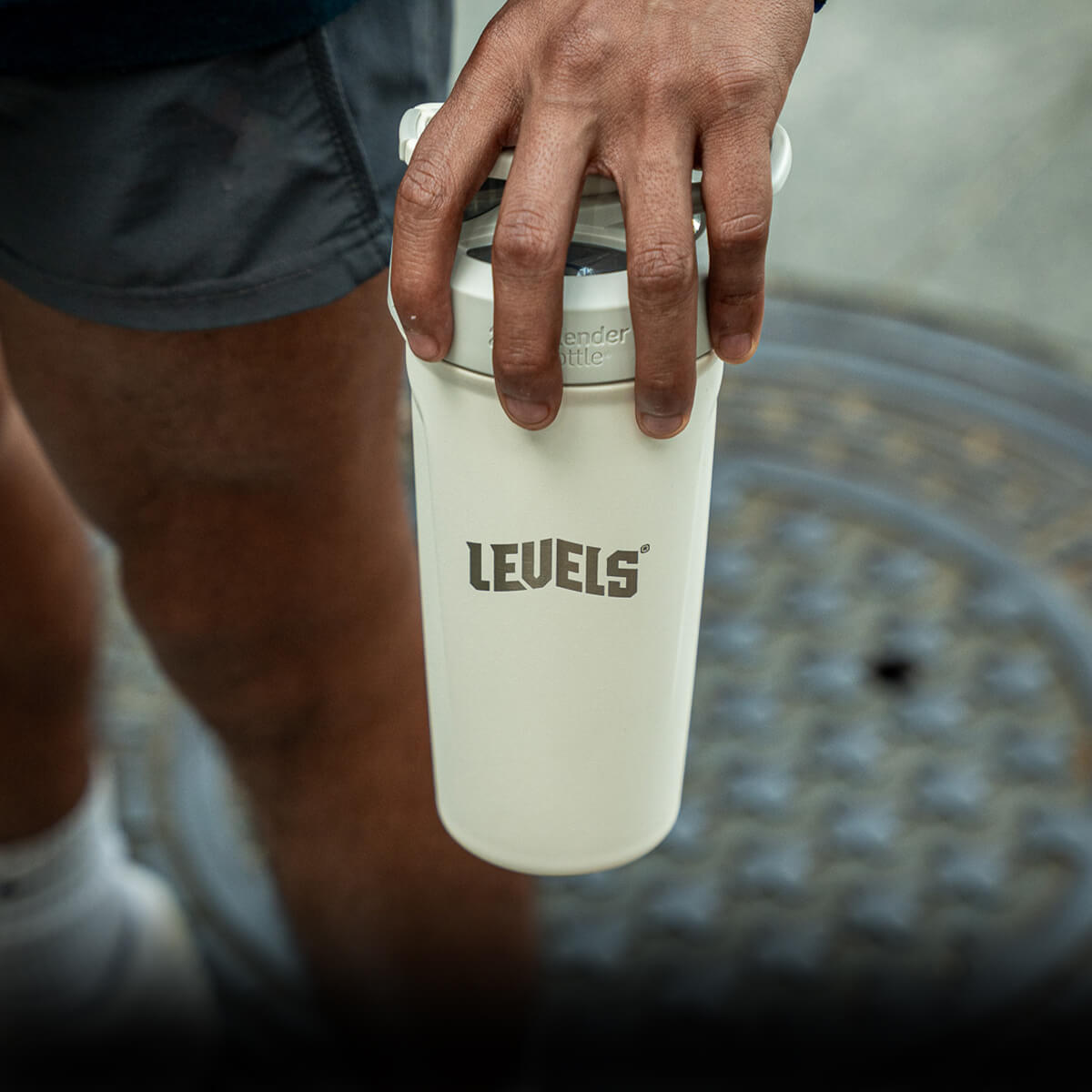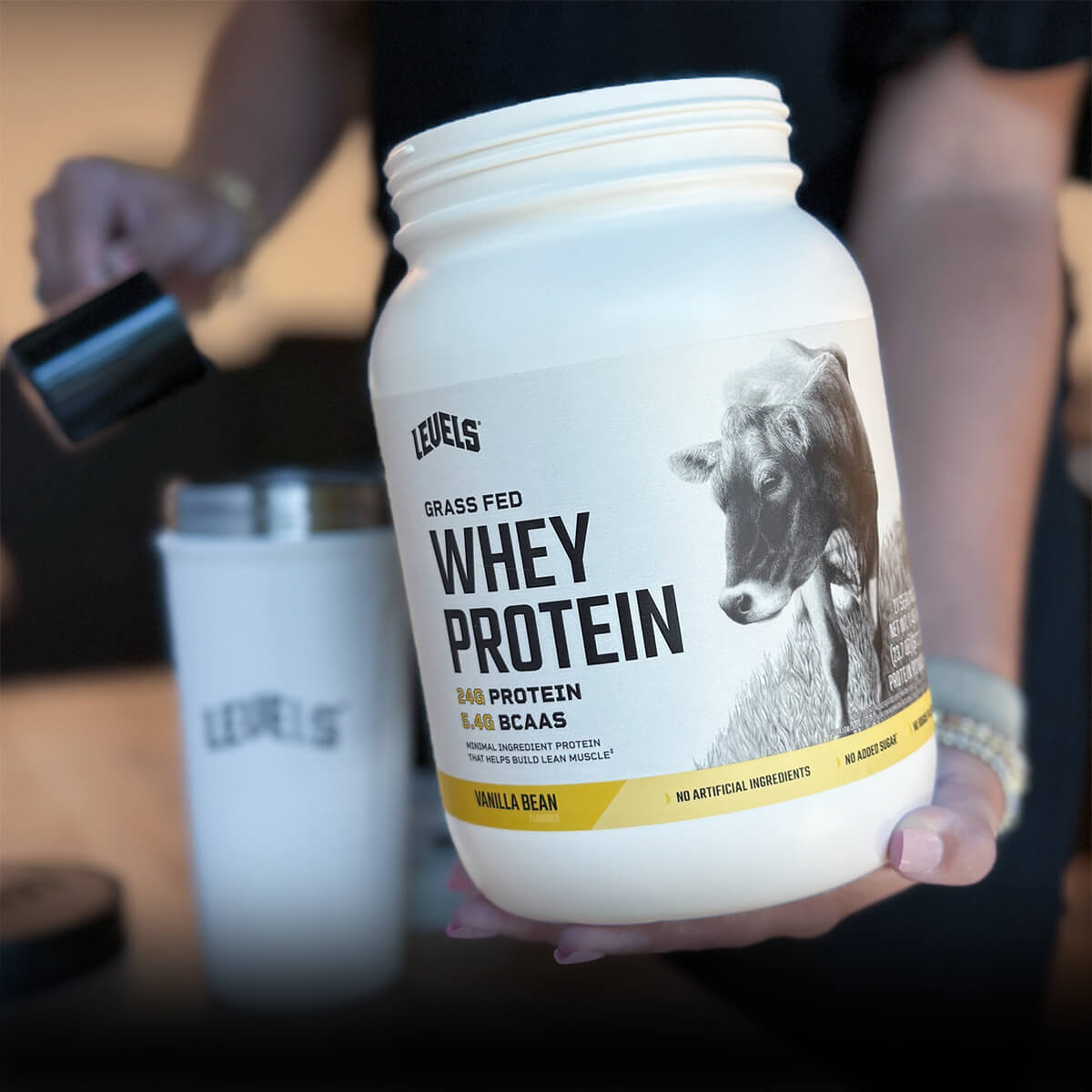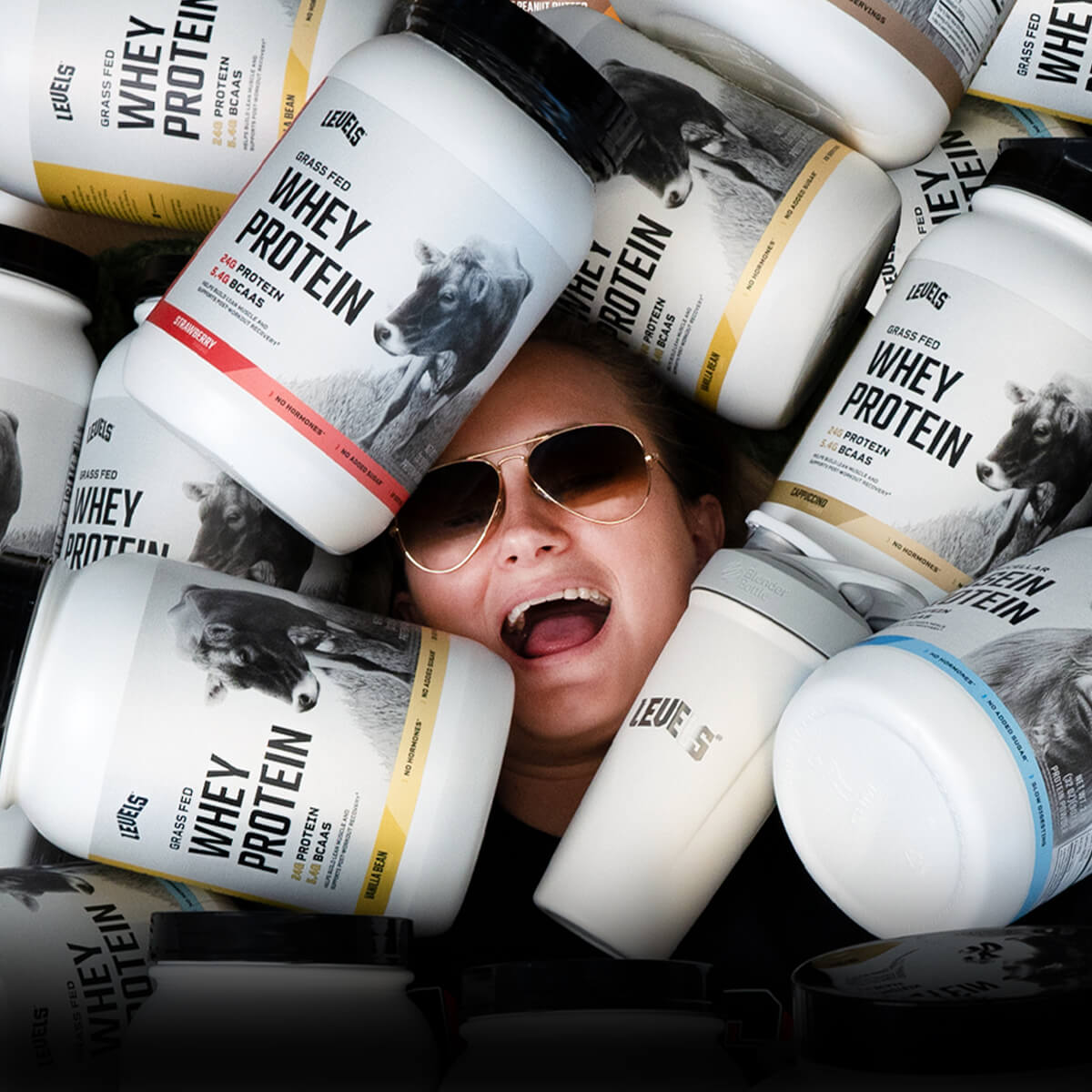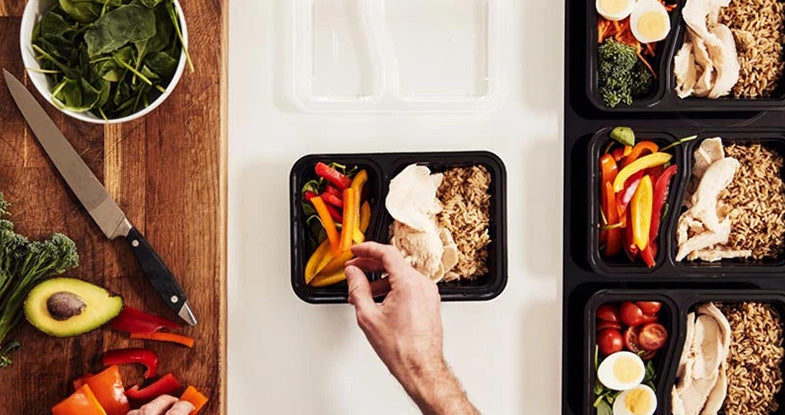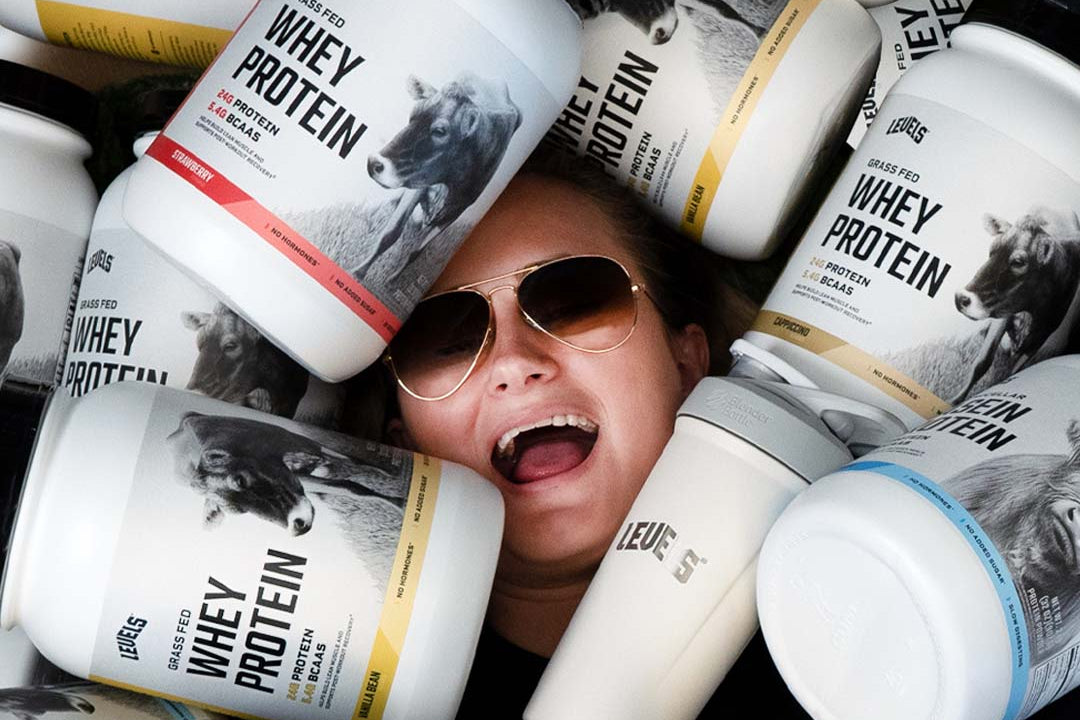Once upon a time, bulking diets were for skinny guys who wanted bigger arms.
But these days, everybody knows that lifting heavy and eating well are the fast track to an enviable physique.
In fact, medical evidence even shows having more lean muscle improves your quality of life and reduces your risk of serious illness[*].
The only problem? If you aren’t careful, you’ll gain weight (fat) in all the wrong places.
In this article, you’ll learn the best way for men and women to bulk up, why clean bulking is wiser than dirty bulking, and 13 tips for packing on lean muscle wherever you want it!
What is Clean Bulking?
Bulking refers to the practice of consuming a caloric surplus — eating more calories than you burn each day on average — to gain weight intentionally.
Clean bulking is the same thing as bulking, but with the added goal of minimizing fat gain. When using this more cautious method of adding weight, people typically choose their foods with care, track macronutrients closely, and adjust calories as needed to prevent the accumulation of excess body fat.
What is Dirty Bulking?
Dirty bulking is essentially the opposite of clean bulking: little concern for fat gain, lots of extra calories, and often the inclusion of lots of fast foods and other processed foods.

So, which one is right for you?
Plenty of people bulk and cut, bulk and cut, but never seem to make any real progress. What’s the point of gaining and losing the same 20 pounds over and over?
Unless you’re a competitive bodybuilder and have some serious “hormonal assistance” (ahem, performance-enhancing drugs), bulking up fast then cutting hard isn’t the best way to achieve your ideal physique. Keeping fat gain to a minimum in the first place is far more efficient.
13 Tips to Gain Lean Muscle Instead of Unwanted Fat
1. Set Realistic Goals
It’s a cliche, but it’s true: if you want to achieve something meaningful, first you must set goals.
The trick is to set goals that are ambitious, but reasonably realistic. Your muscle goals also need to be clearly defined and measurable.
One way to achieve a proper balance is to set multiple, related goals that all lead to the results you want. That way, success doesn't hinge on a single outcome.
For example, if you want to become more athletic and add tons of muscle to your glutes and legs, the following goals would work exceptionally well together:
- Squat bodyweight for 15 reps
- Deadlift double bodyweight
- Add 2-3 inches onto your hip circumference
- Gain 1-2 inches on each thigh
- Increase body weight by at least 10-15 pounds
- Don’t allow waist circumference to increase more than 1-2 inches
Another helpful trick: break all your major, long-term goals down into incremental ones.
Keeping with the above examples, squatting and deadlifting bodyweight with good form are necessary incremental goals before you can do more reps or weight. Additionally, gaining 5 pounds in the next several months would be a great start on the way to a long-term goal of gaining 10-15 pounds.
Also, hold yourself accountable, and review your goals frequently to stay motivated. Tell friends or share your goals and results on social media, too.
2. Measure Your Results
Measuring your results is equally essential to setting goals. Actually, if you don’t measure results, there’s hardly any point in setting goals!
First, choose a time interval for measurement. For most people, once a week is perfect. Or if you consider yourself a hardgainer — someone who has an unusually difficult time gaining weight — once every two weeks is better because it’ll help you stay patient.
Then, choose a few easy-to-gauge but relevant metrics. Here are some starting points:
- Bodyweight (if you want to gain significant lean muscle mass, it’s going to need to increase)
- Shoulder circumference at the widest point (for an excellent way to gauge upper body muscle mass, go all the way around your chest, arms, and back — you’ll need a helper)
- Waist circumference (We’re willing to bet your goals don’t involve a larger waist, so keep an eye on this)
- A weekly photo (nothing fancy, just be consistent with angle and lighting — it works best to compare this week’s photo to a photo from several weeks ago or longer)
Along with the above basics, there are plenty of other ways to track your progress. For example, strength during workouts, or how a favorite piece of clothing fits. Be creative!
And don’t over-measure. Measure and ponder your results once a week, and put in work the other six days. Stop stepping on the scale every day or striking poses each time you walk by the mirror!
Also, here’s the real key to making measurements work for you: if you’re currently making measurable progress, don’t make any changes to your diet or training.
Too many people change their approach to diet and training constantly. If you listen to what your measurements are telling you, you’ll avoid this mistake and achieve much better results overall.
Consider DEXA
Finally, if it fits in your budget, consider a DEXA body composition test once or twice a year, too.
DEXA is the most accurate and precise method available to the majority of people, and it gives you a clear idea of your body fat and lean muscle mass[*]. It’s a fantastic way to set and measure long-term physique goals.
3. Prioritize Calories First
If you want to bulk up, extra calories are your friend. Actually, your best friend.
Overeating is a potent way to add muscle mass, and the chances are slim that you’ll gain muscle without consuming excess calories[*].
As a matter of fact, some studies show that overeating even without weight training can increase your lean body mass[*][*]. (Doing so is not advisable, because people appear to gain equal amounts of fat and muscle, but it illustrates the effectiveness of a calorie surplus.)
Instead of using complicated formulas to determine your optimal intake, your best bet is to take an educated guess and then measure your results. Then you can simply adjust calories upward if you’re not gaining muscle, or downward if you’re gaining too much fat.
If you’re thin and have trouble gaining, start with a daily calorie intake based on your body weight (in pounds) times 20. For example, a 140-pound person would eat 2800 calories (kcal) per day as a starting point.
Or if you want to be more conservative and avoid gaining fat, try bodyweight times 15. In that case, a 180-pound person would eat 2700 calories per day initially.
Then, measure your caloric intake and results for about two weeks. Dozens of different free food tracking apps make it easy to track calories (and macronutrients).
After a few weeks, you’ll be able to follow your new diet by habit, so, remember you don’t have to track calories indefinitely. Simply resume tracking if you hit a plateau or need to make changes.
And if you do hit a weight gain plateau, try adding or subtracting 250-500 calories from your daily intake as needed, but don’t make changes more frequently than every two weeks.
4. Macros Second, Especially Protein
Macronutrients (protein, fat, and carbs) matter when it comes to bulking up, but not as much as calories.
So make sure you don’t nitpick over macros until you’ve dialed in calories. Sufficient calories will drive your results, while the correct macros can optimize them.
Protein Intake for Bulking
The most critical macro for gaining lean muscle happens to be protein[*][*][*].
Start with 25-30% of calories from protein, then try going up from there if you feel a need to fine-tune.
For example, if you eat 2500 calories per day, at Levels we advise about 160-190 grams of total protein per day as a starting point to build muscle mass.
Subscribe to get the latest advice, sales, discounts, product drops and more. Join now and get 15% off your first order.
Other effective protein intake strategies include consuming protein every 3 hours, and consuming a 30-40 gram casein protein shake before bed[*][*]. We don’t recommend using these strategies year-round, but they’re an effective way to turbocharge your progress from time to time.
Fat and Carb Intake for Bulking
Compared to protein and overall calories, the precise ratio of fat and carbs you eat is not crucial for muscle growth.
However, it’s well worth fine-tuning the amount of calories you get from fats and carbs — so long as you’ve already taken care of the more important variables.
Try an equal amount of calories from fat and carbs initially. If you struggle with hunger or notice fat gain, try decreasing carbs and adding more healthy fats in their place.
Conversely, some people achieve better results by consuming a larger portion of calories from carbs than fats.
The Zone Diet (30% protein, 30% fat, and 40% carbs from low glycemic index sources) is an effective way to fuel workout performance and add lean muscle mass.

And some people — looking at you, hardgainers — get their best bulking results with a macro ratio somewhere around 30% protein, 20% fat, and 50% carbs.
Lastly, keto and other very-low-carb diets typically don’t work well to add muscle mass, so skip the keto diet for now if you want to bulk up efficiently[*][*][*].
5. Food Choices: Don’t Obsess Over a “Healthy Diet”
Beyond calories and macros, your food choices aren’t going to make or break your results.
To stay on track with clean bulking, simply meet your nutritional needs and don’t eat junk food all the time.
Try to buy organic, grass-fed, pasture-raised, or local foods when possible — but don’t do so at the expense of higher dietary priorities like eating sufficient calories and protein.
Also, low-fat isn’t the same as eating clean, and low-fat diets reduce testosterone and make it difficult to eat enough calories[*]. So, don’t go 1980s and eat nothing but boneless, skinless chicken breasts, egg whites, and broccoli.
And eating plenty of veggies is great for your health, but don’t eat so many that you fill up before you hit your calorie target. Instead, focus on calorie-dense options that are reasonably nutritious.
If you find yourself struggling to get enough calories in each day, homemade weight-gain shakes with whey protein, fats (like coconut oil, MCT Oil, whole milk, cottage cheese, or similar), and/or appropriate carb sources (such as cooked rice or oatmeal) are a proven way to up your intake.
Next up, some clean bulking food suggestions to inspire your next grocery store trip.
Protein Sources
Here are our top picks for lean protein sources:
- Lean cuts of beef (top round, London broil)
- Lean ground beef or other ground meats
- Chicken or turkey breast
- Tuna
- 2% cottage cheese or ricotta cheese
- Whey protein powder
And here are the best fatty protein sources (to pair with high-fat meals):
- Fatty cuts of beef and steak
- 80/20 or 85/15 ground beef or other ground meats
- Chicken thighs and other poultry with the skin on
- Eggs
- Salmon
- Cottage cheese or ricotta cheese
- Full-fat kefir or yogurt
- Whole milk (if you aren’t lactose-intolerant)
Fat Sources
- MCT Oil
- Extra virgin coconut oil
- Extra virgin olive oil
- Butter
- Heavy cream
- Nuts or seeds
- Almond butter and other nut butters
- Natural peanut butter
- Avocados
- Cheese
Carb Sources
- Rice (white, brown, or other)
- Legumes
- Quinoa
- Oatmeal
- Breakfast cereal
- Sprouted-grain bread
- Pasta
- Sweet potatoes
- Potatoes
- Muffins, bagels, or other bread-based foods
- Natural jelly or jam
- Bananas
- Raisins
- Dates
- Dextrose (pre-workout and optionally while lifting)
The 90% Rule
If you eat “clean” 90% of the time, you can probably get away with eating just about anything the remaining 10% of the time.
For example, if you eat around 30 healthy meals per week (an average of about 4 per day) to gain muscle mass, you can also fit 3-4 indulgent meals per week. Dollar menu, donuts, other desserts — it’s all good.

Overall, this strategy is an easy way to preserve sanity around food, and also decreases the challenge of eating enough calories.
And if you notice you’re gaining fat, try cutting back on carbs or overall calories instead of worrying over food choices.
6. Dial In Pre- and Post-Workout Nutrition
When you lift weights, your body relies on carbs to fuel performance, and protein for repairing and rebuilding muscle.

Consuming carbs before training enhances muscle protein synthesis by elevating insulin levels and increasing amino acid transport[*].
Also, during extended workouts, carbs help fuel performance and prevent muscle loss[*][*].
Consuming a whey protein shake right before, during, or just after your workout improves your results, while delaying the shake might reduce your gains[*].
Start with 50-100 grams of fast-acting carbs (like dates, raisins, or dextrose) pre-workout and a 40-gram whey protein shake post-workout. If you’re crashing during training sessions, consume additional fast-acting carbs as you lift.
Some people also find larger quantities, such as 200 grams of carbs pre-workout and 80-100 grams of protein post-workout, work great during bulking phases.
Experiment to find the pre- and post-workout nutrition strategy that works best for you, but realize it may change over time.
What about supplements? Whey protein powder is a proven staple for adding muscle mass[*].
Creatine and BCAAs add some extra “oomph” to your bulking regimen, too. Not only that, but they also fit well in the pre-workout window with carbs.
But aside from the above supplements, you’re generally better off spending your money on copious amounts of food to optimize your gains.
7. Get Ridiculously Strong
Try this experiment: check out the physique of someone who is significantly stronger than you in the gym. The majority of the time, they will have greater muscular development.
Why?
Lifting heavy in the 1-3 repetition range can make you bigger, all by itself. But even more importantly, it also gives you the skill and ability to safely lift more weight in the “strength-and-hypertrophy” 5-10 rep range.
In other words, someone who can lift more than you has a physique that's adapted to heavier weights, and they also have the ability to grow more easily due to their greater strength.
That’s because lifting heavy increases the efficiency of your nervous system and recruits more motor units, thus allowing you to build muscle more effectively[*].
So if you want to add considerable amounts of lean mass, plan on getting a lot stronger over the coming months and years.
Use a variety of rep ranges, but don't shy away from sets with low reps and heavy weight.
8. Use These Movements
When it comes to adding muscle mass, your choice of weight training movements is crucial.
Focusing on larger muscle groups like your legs, back, chest, and shoulders also builds a proper foundation for “vanity” muscles like your upper arms.

Try going heavy on the following exercises with a 1-2 second eccentric and an explosive concentric tempo (you can also use 3-4 second eccentrics occasionally for even more muscle fiber breakdown)[*][*]:
- All squat variations, especially full back squats
- All deadlift variations, especially the conventional deadlift, trap bar deadlift, and partial rack deadlift
- Dips
- Pull-ups, chin-ups, and pull-downs
- Bent-over barbell rows and one-arm dumbbell rows
- Overhead presses
- All bench press variations
And when it comes to adding lean muscle, machines also work phenomenally well. Don’t shy away from compound movements on plate-loaded, cable stack, and other types of machines.
Let the above movements comprise the majority of your training volume, with carefully-chosen isolation movements — such as lateral raises, ab work, and biceps curls — rounding out the rest of your program.
What about rep ranges? While most rep ranges can work for hypertrophy, 5-10 reps per set is an excellent way to get stronger and build dense, thick muscles at the same time.
Also, try ending your workout with lightweight 1-0-1 tempo “pump” sets of both compound and single-joint movements to increase blood flow and nutrient delivery to muscles. Use 25-100 reps per set and very light weights.
9. Stay Active
If you're a hardgainer, maybe you've heard the advice to be as sedentary as possible outside the gym. Here's why all that couch time usually isn't a great idea.
Although rest days are necessary for anyone who trains hard, adding cardio and increasing non-exercise physical activity (NEPA) such as walking speeds your recovery, elevates your metabolism, and helps prevent fat gain during bulking[*][*].
At Levels, we recommend at least 5 total hours of physical activity per week for a balance of muscle mass, fitness, recovery, and preventing fat gain. And typically, that means you'll need some other activities besides lifting weights.
Additionally, aerobic exercise and other forms of cardio are fantastic for your overall health (and heart health in particular), especially if you’re also doing resistance training[*][*].
Here are our top picks:
- Walking
- Fasted low-intensity steady state cardio
- Low-intensity recovery-oriented circuit training
- Repeated sprints, especially hill sprints
- High-intensity interval training (HIIT)
If you aren’t sure where to start, begin with walking a few times per week. Consider fasted cardio or low-intensity recovery circuits if you want to add more exercise.
All of the above forms of activity work well to keep you lean as you add muscle, but sprints and HIIT can tax your recovery, especially if you’re lifting heavy.
On the other hand, adding a new activity or experimenting with a blend of several can be very effective for preventing fat gain.
And for best results, schedule all your non-lifting activity on non-lifting days.
10. Watch for Plateaus
When you aren’t achieving any more progress for several weeks in a row (as determined by your weekly measurements and training log), you’ve hit a plateau.
Believe it or not, plateaus aren’t a bad thing. They’re inevitable, so you have to learn to embrace them.
A plateau simply means you need some progression or novelty in your training program or diet (or both).
An example of training progression is adding more volume or weight, or upping the intensity another way — like an extra training day each week, or decreasing rest periods.
You can introduce dietary progression by adding calories to your daily intake, adjusting your protein intake upward, or consuming more carbs.
For best results, combine a mix of training and diet progressions to jump-start progress after a plateau.
In contrast to progression, novelty means going to a different training program or diet, or at least changing some significant aspect of your approach.
For instance, you could rotate out particular exercises you’re stalled on, or adopt a new eating schedule.
Generally speaking, you should use progression far more frequently than novelty. Then, when you’ve wrung out every bit of your old approach and can’t progress further, try a new one.
And remember: if you’re currently getting measurable results, there’s no need to make any changes yet!
11. Know When to Take a Break
Sometimes, plateaus occur due to a lack of recovery. It’s perfectly normal for your body to accumulate enough fatigue to require some time off.
You’ll know you need a break because you’ll feel sluggish, weak, irritable, or unmotivated to train.
To prioritize recovery, you can either deload by cutting volume or loading by 25-50%, or you can take a full 1-2 weeks off.
If you deload, decide whether to cut volume or load case-by-case for each movement. Personally, we like to drop volume for heavier lifts, and use less weight on the higher-volume movements.
For best results, maintain your bulking diet whenever you take a break. The extra calories help speed up recovery and should help add some lean muscle, too.
But if you need time off more often than once every 2-3 months at most, the chances are high that you’re training too intensely or too frequently, or you haven’t dialed in your sleep, diet, or other recovery measures.
Also, it’s wise to take a week or two off between training programs so you have a fresh start.
12. Try Maintenance Mode
Sometimes you’ll hit a plateau that you can’t fix using progression, novelty, or time off.
When that happens, the only thing you can do is live with your situation.
Instead of giving up or trying to out-eat or out-train a serious plateau, try focusing on getting stronger for a while.

Thanks to a phenomenon called “newbie gains,” beginners won’t need to focus on maintenance at first. But the longer you train, and the more muscle you gain, the higher the odds become that you’ll have to make the transition to maintenance for a while.
Think about it: we don’t make progress linearly, but rather in bursts. By taking time off from bulking and getting stronger instead, you’re increasing your ability to add lean muscle in the future.
During maintenance, your training regimen should more closely resemble that of a powerlifter looking to add weight to the bar gradually, not a bodybuilder who’s bulking up fast.
You’ll still want to eat a decent caloric surplus, but your diet doesn’t need to be as growth-oriented. Keep it simple and easy to follow.
Nor should you lose any weight or try to get leaner. The point is simply to eat enough to support lifting heavy and getting stronger.
Try maintenance mode for 1-3 months as needed, then switch to a brand-new, higher-volume training program and back to a clean bulking diet. You’ll find that your gains come easy again after a reset.
13. Don’t Give Up — Keep Grinding
Depending on your goals, it may take months or years before you can say “mission accomplished.”
And if you’re lifting naturally, without performance-enhancing drugs, progress will eventually get extremely slow as you become more advanced. Depending on your goals, this slow-down may occur before you reach them.
But along with overall muscle mass and strength, there are plenty of other variables to fine-tune: muscle density, body shape, posture, and imbalances or weaknesses that become apparent over time.
Here’s the thing: as long as you always focus on improving some aspect of your physique, you’ll get there eventually.
Final Thoughts
For the vast majority of people, clean bulking is the best way to bulk up.
You don’t have to eat from a restricted menu or incorporate the latest “superfood” fad, but at least stay away from junk food 90% of the time. (If you have to ask if something is junk food, it probably is.)
Even more importantly, don’t allow out-of-control fat gain. If you do, you’ll just spin your wheels trying to lose the unwanted fat (and also losing your hard-earned muscle mass) later on.
Did this article help you troubleshoot an issue? Would you like to share some clean bulking advice that’s worked well for you? Please let us know in the comments!

